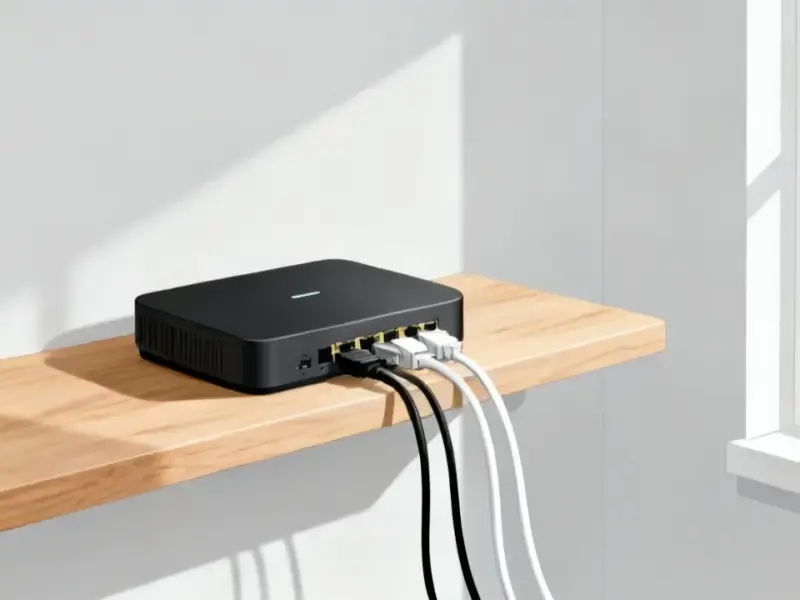According to TechSpot, Valve’s October Steam Hardware Survey reveals significant milestones for both AMD and Linux gaming platforms. AMD’s CPU market share reached a record high of just over 42%, while Linux usage passed the 3% threshold for the first time ever, largely driven by Steam Deck adoption with Arch Linux leading at 0.31% share. The GPU market saw continued volatility with the RTX 3060 reclaiming the top spot from the RTX 4060 laptop GPU, while Windows’ dominance slightly declined to 94.84% despite Windows 11 growing to 63.5% adoption. These figures from Valve’s monthly hardware survey suggest fundamental shifts in the gaming hardware ecosystem that merit deeper analysis.
The Linux Gaming Revolution Finally Arrives
The 3% Linux milestone represents far more than just a number—it signifies the maturation of Linux as a viable gaming platform after decades of struggle. What’s particularly telling is that Arch Linux, traditionally considered a more technical distribution, leads the charge rather than user-friendly alternatives like Ubuntu or Mint. This suggests the growth is driven by enthusiasts and early adopters who value performance and customization over convenience. The Steam Deck’s success demonstrates that when hardware and software are tightly integrated, Linux can deliver a seamless gaming experience that rivals Windows. Proton’s continued improvements and broader game compatibility have essentially eliminated the primary barrier that kept gamers on Windows for decades.
AMD’s Strategic CPU Ascendancy
AMD crossing the 42% threshold in CPU market share represents a remarkable turnaround from their sub-20% position just a few years ago. The Zen architecture’s consistent performance improvements across multiple generations has fundamentally changed the competitive landscape. What’s particularly impressive is that this growth comes despite Intel’s aggressive pricing and frequent product refreshes. AMD’s success stems from their platform strategy—offering compelling performance across desktop, laptop, and now handheld gaming segments with unified architecture. The Steam Deck’s custom AMD APU has essentially become a showcase for their efficient performance-per-watt capabilities, creating a halo effect that benefits their entire product lineup.
GPU Market Volatility and Consumer Behavior
The constant shuffling between RTX 3060, 4060, and 4060 laptop GPU for the top spot reveals several market dynamics. The RTX 3060’s resurgence suggests price sensitivity remains a dominant factor, as gamers opt for previous-generation value over newer, more expensive options. Meanwhile, the strong performance of RTX 5070 and 5060 series cards in monthly gains indicates that when new technology delivers meaningful improvements at reasonable price points, adoption follows quickly. The slight decline in overall AMD GPU share to 17.9% highlights the ongoing challenge of competing with NVIDIA’s mindshare and feature set, despite competitive raw performance from Radeon cards.
Memory Configuration Trends and Future Implications
The survey’s revelation that 8GB VRAM configurations are struggling against 16GB variants signals a critical inflection point in gaming requirements. As games increasingly target 1440p and 4K resolutions with higher-resolution textures, 8GB has become the new minimum rather than the sweet spot. NVIDIA’s reported directive to partners to prioritize 16GB RTX 5060 Ti models reflects this reality. Similarly, 16GB system RAM becoming the standard suggests that modern gaming, combined with background applications and browser usage, has finally pushed 8GB configurations into obsolescence. These trends will likely accelerate as developers target next-generation consoles with unified memory architectures exceeding 16GB.
Broader Industry Transformation Ahead
These survey results collectively point toward a more diverse and competitive gaming hardware ecosystem. Linux’s growth challenges Microsoft’s historical dominance, while AMD’s steady gains threaten Intel’s long-standing leadership. The GPU market’s volatility suggests consumers are becoming more sophisticated in their purchasing decisions, weighing performance, features, and value rather than blindly following generational upgrades. As Valve’s ongoing hardware tracking continues to reveal these trends, we can expect manufacturers to adjust their strategies accordingly, potentially leading to more competitive pricing, faster innovation cycles, and better consumer choice across all hardware categories.




